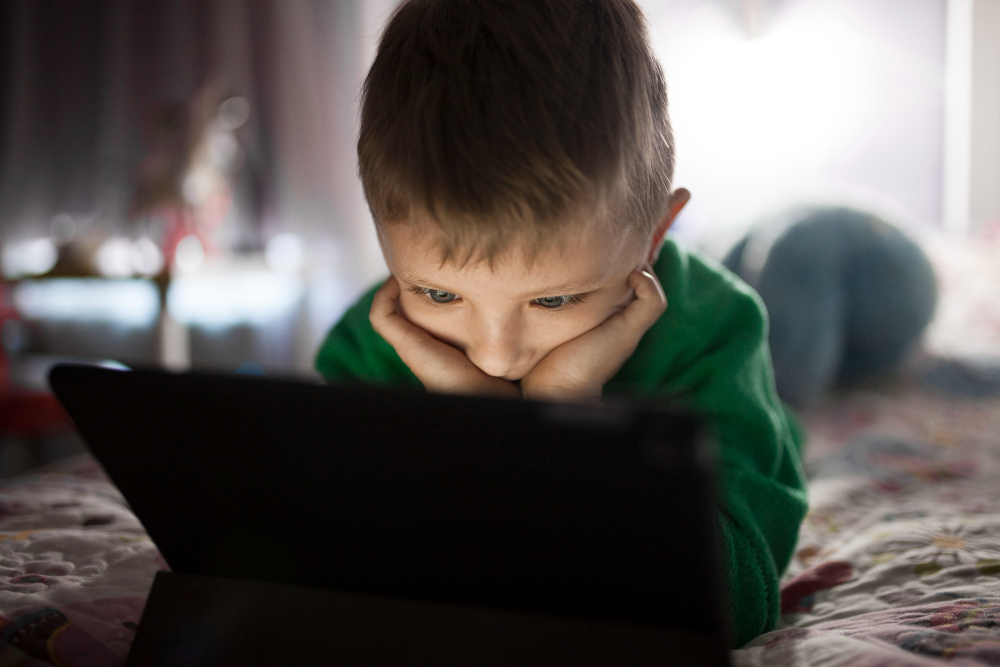You’re not alone if you’re unsure about how screen time affects your child’s reading growth.
On one hand, there are warnings about screen overuse. On the other, there are glowing reviews of literacy-boosting apps and tools.
The question remains: Are screens helping or hurting your child’s reading development?
The truth is: not all screen time is created equal. While some forms can hinder attention and literacy skills, others can actually support and strengthen them.
The key lies in understanding the differences and learning how to balance screen use with meaningful reading time.
Not All Screens Are Created Equal
It’s important to differentiate between passive and interactive screen content. Passive screen time—like watching cartoons or mindless YouTube videos—often involves little to no cognitive engagement.
Kids consume information without processing it, which can reduce attention span, imagination, and language development over time.
On the other hand, interactive screen time can stimulate literacy growth. E-books with read-along features, vocabulary-building games, and story-based apps engage children in active learning.
These experiences often require kids to make choices, pronounce words, or follow along with a storyline, all of which contribute to reading comprehension and vocabulary expansion.
The takeaway? It’s not only the amount of screen time that matters; it’s also the type of screen time.
Educational Apps vs. Entertainment Overload
With the abundance of apps claiming to be educational, how can parents distinguish between those that are beneficial and those that may not be?
High-quality educational apps:
- Encourage phonics, word recognition, and reading comprehension.
- Are developmentally appropriate and age-specific.
- Include features like progress tracking and in-app guidance.
- Avoid distracting, overly stimulating animations and ads.
These types of apps can be powerful tools for early readers, especially when used together with parental involvement. Sitting beside your child while they explore a reading app allows you to reinforce concepts and ask questions, turning screen time into an interactive experience.
In contrast, purely entertainment-based content—no matter how fun—rarely offers the same benefits. Binge-watching cartoon series or endless video streams can fill hours but don’t contribute to literacy in a meaningful way.
If screen time is inevitable (and let’s be honest, it often is), prioritize apps and platforms that promote language development and align with your child’s reading level.
How to Set Smart Screen Limits (Without the Meltdown)
Setting limits doesn’t have to lead to arguments. In fact, when screen rules are clear, consistent, and age-appropriate, they can actually reduce power struggles.
Here are a few strategies that work:
- Schedule screen time after reading time: Position books as the main event, with screen time as a follow-up.
- Use timers or visual charts: Let kids see how much time they have left, helping them self-regulate.
- Offer choices within limits: For example, “Would you like to play a reading game or listen to an audiobook?”
- Create tech-free zones: Designate the dinner table, car rides, or bedtime as screen-free spaces that prioritize conversation and books.
The American Academy of Pediatrics recommends no more than one hour of high-quality screen time per day for children aged 2 to 5, with consistent limits for older kids.
But the quality of that screen time and how it fits into your family routine is more important.
Pairing Screens and Books for Stronger Literacy Habits
Instead of treating screens and books as enemies, try using them together. This blended approach can make reading feel more relevant in a digital world.
Here are some suggestions to get you started:
- Start with a reading app, then switch to a print book: Let your child listen to a story on a device, then revisit it in print form to deepen comprehension.
- Use audiobooks during car rides: Audiobooks are a great way to build vocabulary, listening skills, and narrative understanding—even on the go.
- Watch the movie after reading the book: Watching a book-based movie can be a fun reward and opens the door to rich discussions about characters, plot, and theme.
Screens are a part of modern life. Rather than avoid them, use them intentionally to support your child’s learning and growth.
Balance Is the New Literacy
The conversation around screen time is shifting—and for good reason. It’s not about eliminating screens altogether; it’s about using them wisely.
By choosing high-quality content, setting healthy limits, and blending digital tools with traditional books, you can turn screen time into an ally in your child’s reading journey.
As a parent, you have the power to shape how your child interacts with technology. And with the right approach, that interaction can lead to stronger language skills, better focus, and a genuine love for reading.
Build Your Child’s Reading Future with Read Smart
At Read Smart, we help parents like you find the right balance between screen time and story time.
Our personalized reading programs are designed to meet your child where they are—and take them where they want to go. With expert support, progress tracking, and a nurturing environment, your child will build not just skills, but confidence.
Call Read Smart at (918) 559-7323 to schedule your FREE reading evaluation and discover how we can turn every page into progress.

